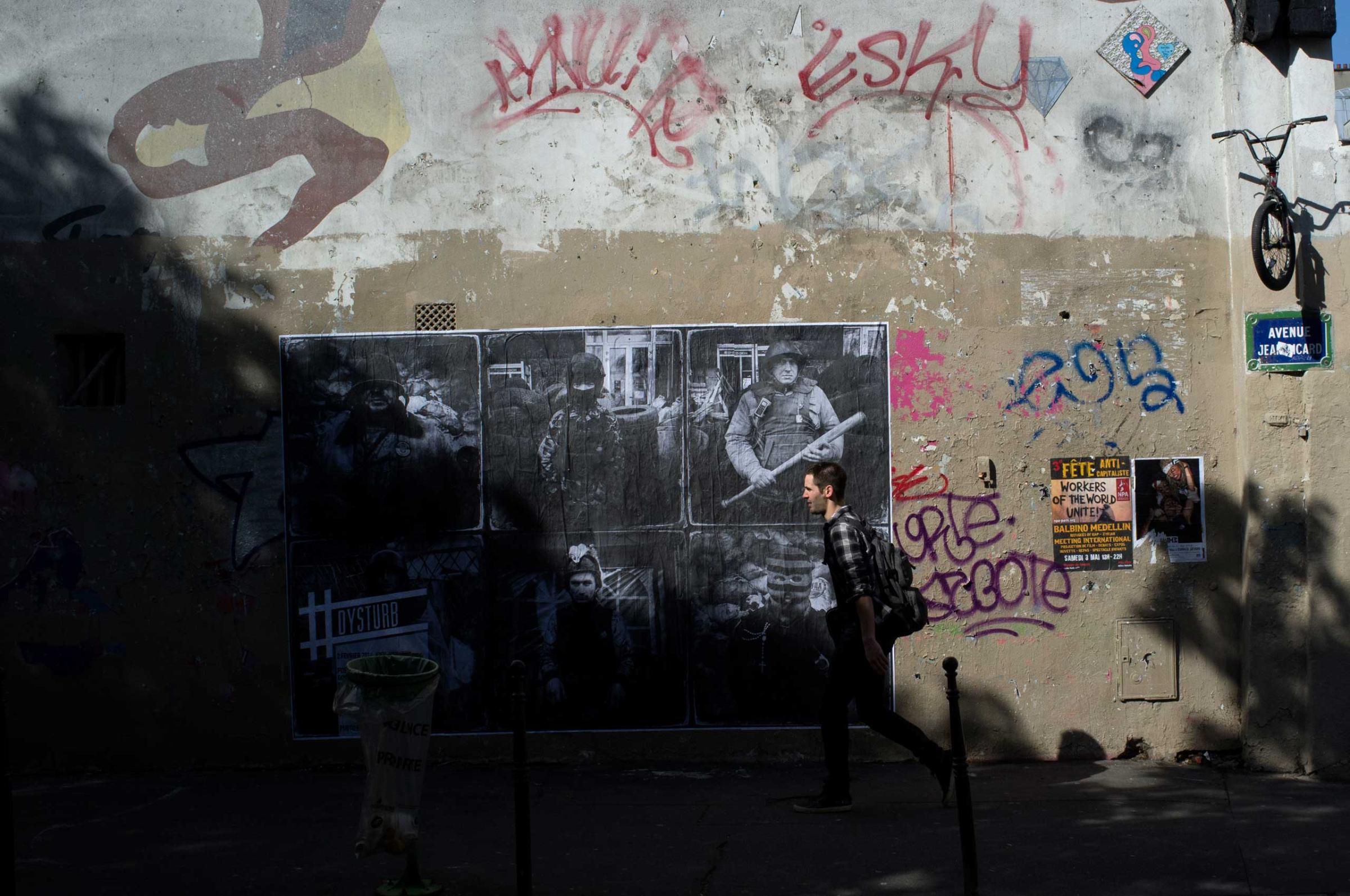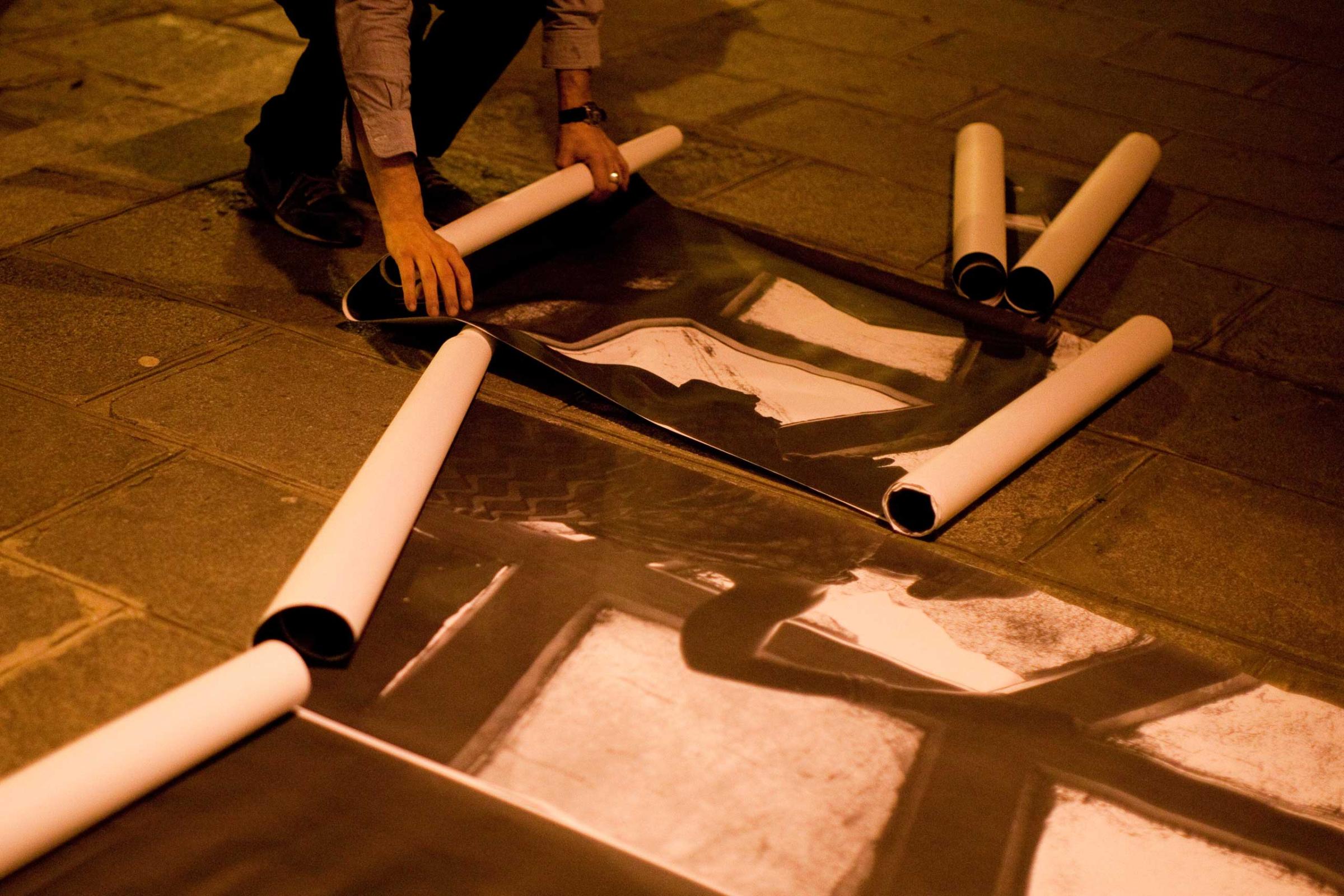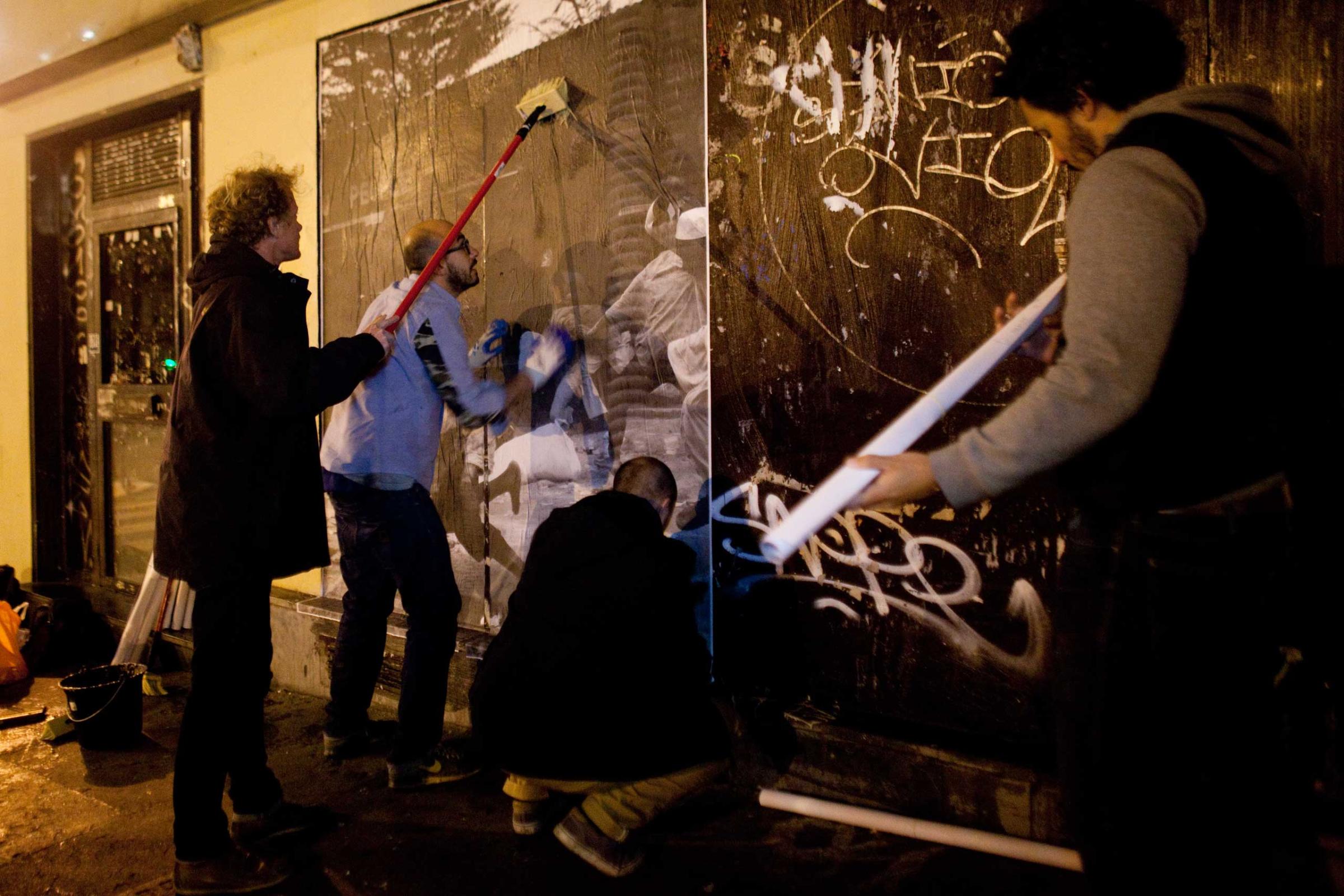
Pierre Terdjman shares many of his colleagues’ frustrations. “Each time I finish a story, it’s the same struggle to get my images published, ” he told TIME, “magazines are rarely interested in showing what’s happening in Egypt, in Georgia, in Afghanistan. Sometimes they’ll publish one or two images, but that’s it. So, everything started from a very selfish idea. I wanted to show my photographs. I wanted to inform people, show them what I’d seen.”
In February, fresh from his latest trip to Central African Republic, Terdjman, 34, called a few friends, printed poster versions of his images and, armed with brushes and a pot of glue, started posting his work in the streets of Paris, France. “The street is the ultimate social network,” Terdjman added. “You’re reaching everyone.”
The response was overwhelmingly positive, said the French photographer. “I reached out to some of my colleagues, including Benjamin Girette, and we founded Dysturb.” What is Dysturb? Moving beyond his own photographs, Terdjman has invited photojournalists to send some of their work to paste them on Paris’ walls. “The goal is to raise awareness about what’s actually going on in the world. We’re not looking to make a name or to degrade a city’s public spaces. It’s really about telling the story of what’s happening in CAR, in Egypt, in Ukraine.”
“We go to these places to bring back the news,” said Girette. “We often spend weeks getting the story so, of course, when we come back home, we want people to listen to what we have to say. But, in the majority of cases, we don’t get any feedback, especially if you’re a young photographer starting in this industry. Plus, the news moves too quickly. After a couple of weeks, no one’s interested in our work. Yet, these images remain important.”
Terdjman readily admits that he didn’t invent anything. “Fly-posting has been done for ages, in advertising but also in the art world.” And in photography, there’s JR, another French photographer and artist renowned for his Face2Face project where he used the Separation Barrier in Israel as a canvas for his portraits of Palestinians and Israeli people. “JR is doing a great job,” said Terjdman, “but what we’re doing is different. We’re trying to bring the news to people.”
Dysturb is the latest step in a movement that has seen photographers cut out traditional publishing avenues. With the popularity of social platforms such as Facebook and Instagram, Terdjman and his colleagues have been able to build their own audiences, free of any editorial control. “Naturally, the next step was the street – that’s the only social platform that’s bigger than Facebook,” explained Girette.
For award-winning photographer Guillaume Herbaut, Dysturb also brings back documentary photography to its activism roots. “Photojournalism used to be a transgressive, militant act. Wild posting these images puts photography back in that context. It asks questions about representation and the different realities we’re faced with in this world.”
So far, the City of Paris has remained quiet. “We’ve had a run-in with the police once when they destroyed two of our images,” said Terdjman. “Otherwise, we’ve yet to hear from City Hall, but we’d love to collaborate with them to grow this project.”
While Terdjman is benefiting from a new-found popularity in the photojournalism community, his initiative won’t pay the bills. “But that was never the goal,” he explained. With each poster costing only $40 to print, and everyone working on a voluntary basis, Dysturb’s founders are focussed on expanding their operations to other cities in France and Europe, before taking on New York and San Francisco in the US. Later on, Terdjman will consider crowdfunding future operations.
Terdjman and Girette are already developing a new version of the Dysturb website that will bring more context to their images. “The new site will have a map of the different locations where we put up our work,” said Girette. “On that map, you’ll find the name of the photographer, the caption, but also a link to the full edit of images. We want to create a link between the image, the photographer and the story.”
If Dysturb achieves critical mass, then it will also be able to react quickly to the news. “Let’s say Vladimir Poutine, for example, decides to invade Ukraine tomorrow, we can react by putting up the same image in 10 different cities the next day,” said Girette. “We want people to wake up to the news. We want to spark a debate.”
And last week, the group was able to do just that, but for heartbreaking reasons. When one of their friends and colleagues, Camille Lepage, was killed in Central African Republic, they met in grief at a bar in Paris, before taking to the streets to paste her work all across town. “We will remember her,” the group said. “You will remember her.”
Pierre Terdjman and Benjamin Girette are freelance photojournalists and co-founders of Dysturb
Olivier Laurent is the incoming editor of TIME LightBox









More Must-Reads from TIME
- Cybersecurity Experts Are Sounding the Alarm on DOGE
- Meet the 2025 Women of the Year
- The Harsh Truth About Disability Inclusion
- Why Do More Young Adults Have Cancer?
- Colman Domingo Leads With Radical Love
- How to Get Better at Doing Things Alone
- Michelle Zauner Stares Down the Darkness
Contact us at letters@time.com